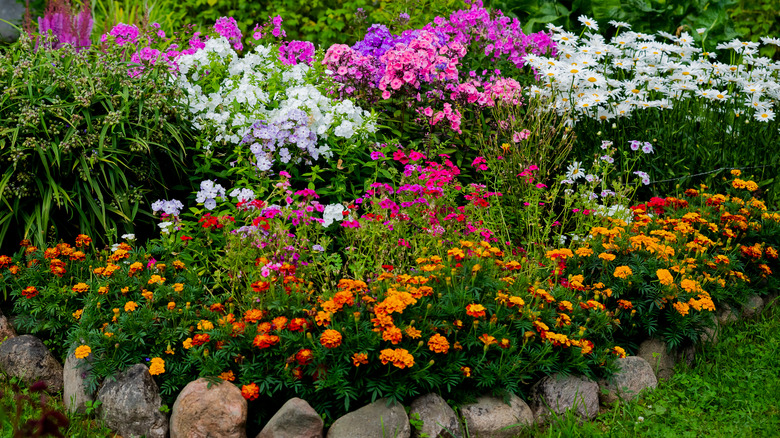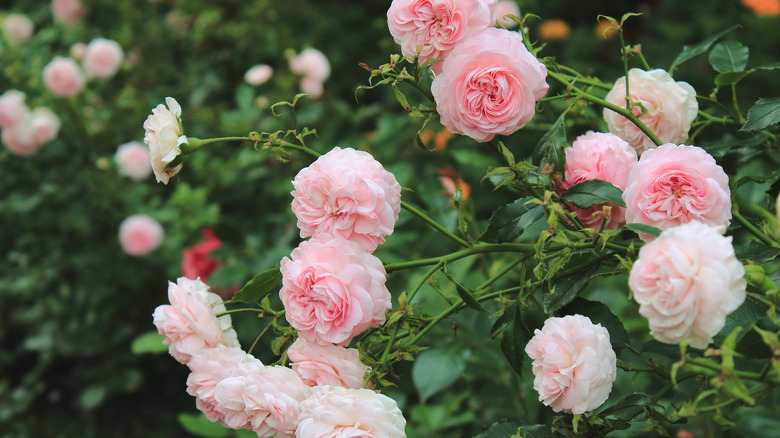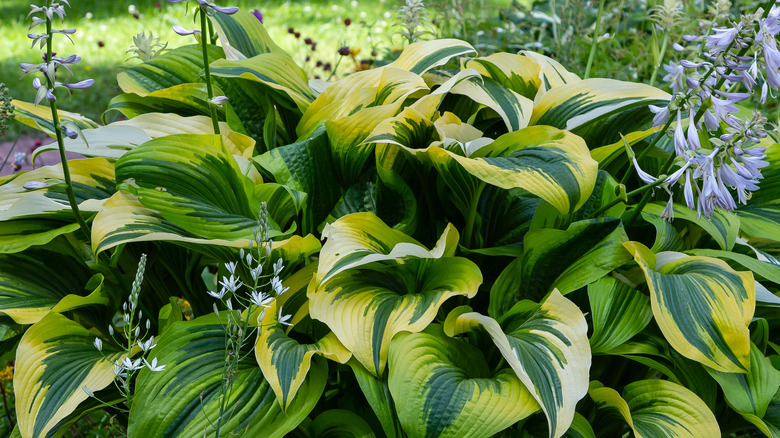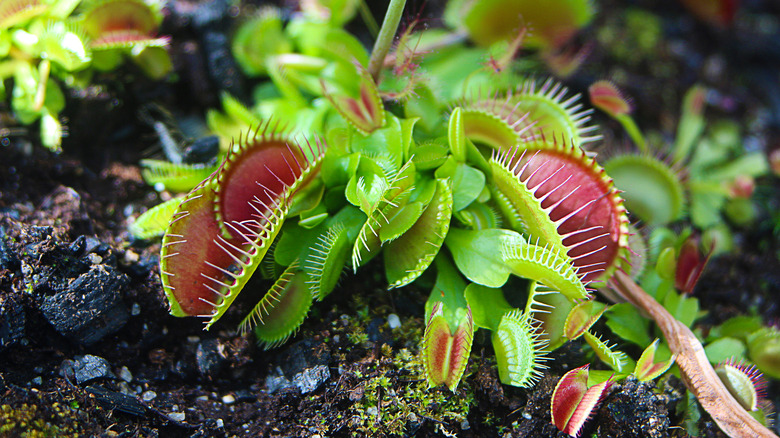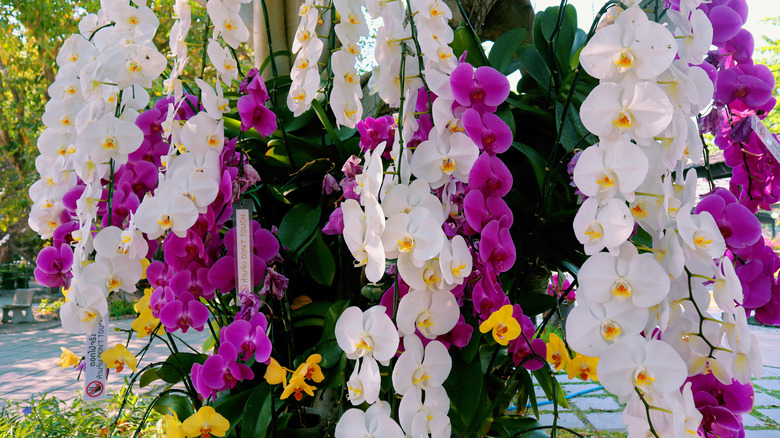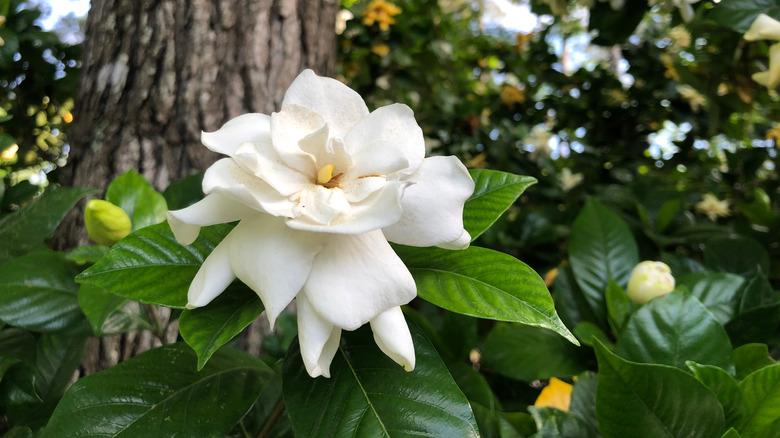These Are The Finicky Perennials You Should Avoid Adding To Your Garden
For a new gardener or anyone who has no time to tend to plants, it is best to be careful of the species you choose to include in your yard. While there are plenty of beautiful ornamental florae or even common vegetables, not every plant is worth having in your garden. Some are just too needy or high maintenance, and you will have difficulty trying to keep them alive. From specific soil pH to unusual watering needs, some greenery is just too much work, especially if you want something to just put in the soil and kind of forget about it. Such plants are easier to grow under a controlled environment like in a greenhouse or are better in expert hands.
However, it is worth mentioning that a plant's maintenance requirement is often subjective depending on the climatic conditions and region. The United States Department of Agriculture mentions that hardiness zones will help you determine what flora is suitable for a certain region. But let's face it, some plants are more resilient than others, and avoiding the finicky options might just save you a lot of trouble. Here are some perennial plants that you should think twice before adding to your garden.
1. Roses
There is no denying that when a rose plant (Rosa spp.) blooms, the flowers delight the eyes. However, the rose is among the florae that might not be worth introducing to your garden because of their finicky nature. Roses require frequent watering and are prone to various diseases and pests. Because of the frequent water needs, the University of Missouri Extension mentions that a good watering plan is a must, and even suggests a drip irrigation system for a consistent drink supply.
Roses do not like hot climates; it is almost impossible to keep them alive at higher temperatures without proper irrigation. However, since there are plenty of varieties, some roses require minimum care, while others don't. Species like the old garden rose are relatively low maintenance compared to their hybrid counterparts. So if you must have this plant in your garden, it is best to do your due diligence first or avoid growing it altogether if you don't want to take any chances.
2. Hostas
The hostas (Hosta spp.) is a popular perennial because of its showy foliage and the fact that it is among the few plants that love growing under the shade. While this plant looks attractive and inviting on paper, it shouldn't fool you. Hostas is a heavy drinker and requires frequent watering to keep the roots wet and the soil moist. However, the biggest concern when growing these plants is slugs (via the University of Minnesota Extension).
These pesky pests love feeding on the beautiful foliage leaving ugly holes and patches on the leaves. For a plant that is grown purposely for the beautiful foliage, holes, and patches destroy its ornamental value. Using pesticides or neem oil to control the infestation might work for a while, but if you live in a wet climate which is a breeding ground for slugs, you can be sure that they will find their way to your precious plants. So if you live in a slug-prone area, consider the blue hostas variety with thicker leaves, which is less prone to pests.
3. Venus flytrap
The Venus flytrap (Dionaea muscipula) is a good choice if you love unusual plants in your outdoor garden. However, before getting hyped up about the idea of growing this flora in your backyard, there are a few things that you should know. First, growing the Venus flytrap is not as easy as you might imagine. This plant requires certain conditions in order to develop and thrive into a healthy plant. Regular potting mix will kill the Venus flytrap; therefore, you will need to place it in peat or sphagnum moss alongside other additives like silica sand.
You will also be surprised to know that you can only water this plant using rainwater or distilled water, mentions North Dakota State University. But that is not all; the Venus flytrap loves the sun and has evolved to be carnivorous, so if you choose to move the pot inside during winter, you will need to catch flies or any other insect and feed them to the plant. Talk about high maintenance!
4. Orchids
Orchids (Orchidaceae) are popular colorful additions to any garden, thanks to their beautiful flowers. However, with orchids, there is always more than meets the eye. While this plant is undeniably pretty to look at, especially when it flowers, it is seriously fragile. Naturally, orchids are epiphytes or air plants, meaning they don't grow in the soil, mentions Iowa State University Extension and Outreach. So, in order to cultivate the orchid plant successfully, you will need to recreate its natural conditions to the best of your abilities.
First, since they don't grow in the soil, you need to plant them in sphagnum moss with very good drainage. Watering orchids is another delicate process that requires correct timing; you should allow the plants to dry out before giving them a drink. While they love the morning sun (but you should be careful not to expose them to direct sunlight), they also love the shade for the rest of the day. A rule of thumb to observe when growing orchids is that dark green leaves indicate insufficient sunlight, while light green leaves mean the plant is getting enough sunlight.
5. Gardenias
Gardenia (Gardenia jasminoides) is a tropical evergreen plant that blooms in beautiful and scented flowers. However, you shouldn't be blinded by its beauty; this plant has a reputation for being difficult to care for and maintain. Nonetheless, if you love the scent and the flowers, here is what you need to know about these species before plunging ahead. Gardenias will drop their promising buds if the temperature is too cold or too warm, so you should probably avoid this plant altogether if you live in regions where temperatures go to both extremes. They require ideal conditions in order to bloom.
Purdue Consumer Horticulture advises that you must water your gardenia plant consistently and adequately with proper nutrients for healthy blooming. They love growing under a shade with partial exposure to the sun. Also, gardenia flourishes in temperatures between 75°F and 82°F; therefore, you will need to bring the pot inside during the colder nights. If you are still considering planting these plants in your garden, be advised that they do not tolerate neglect and will require very close attention.
